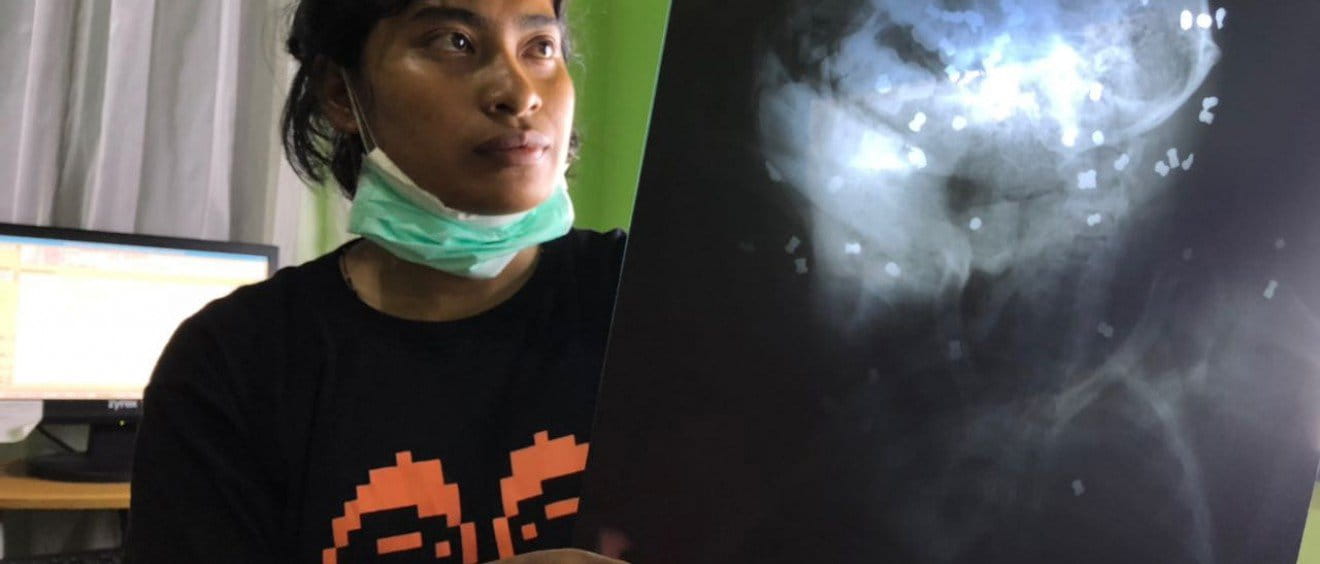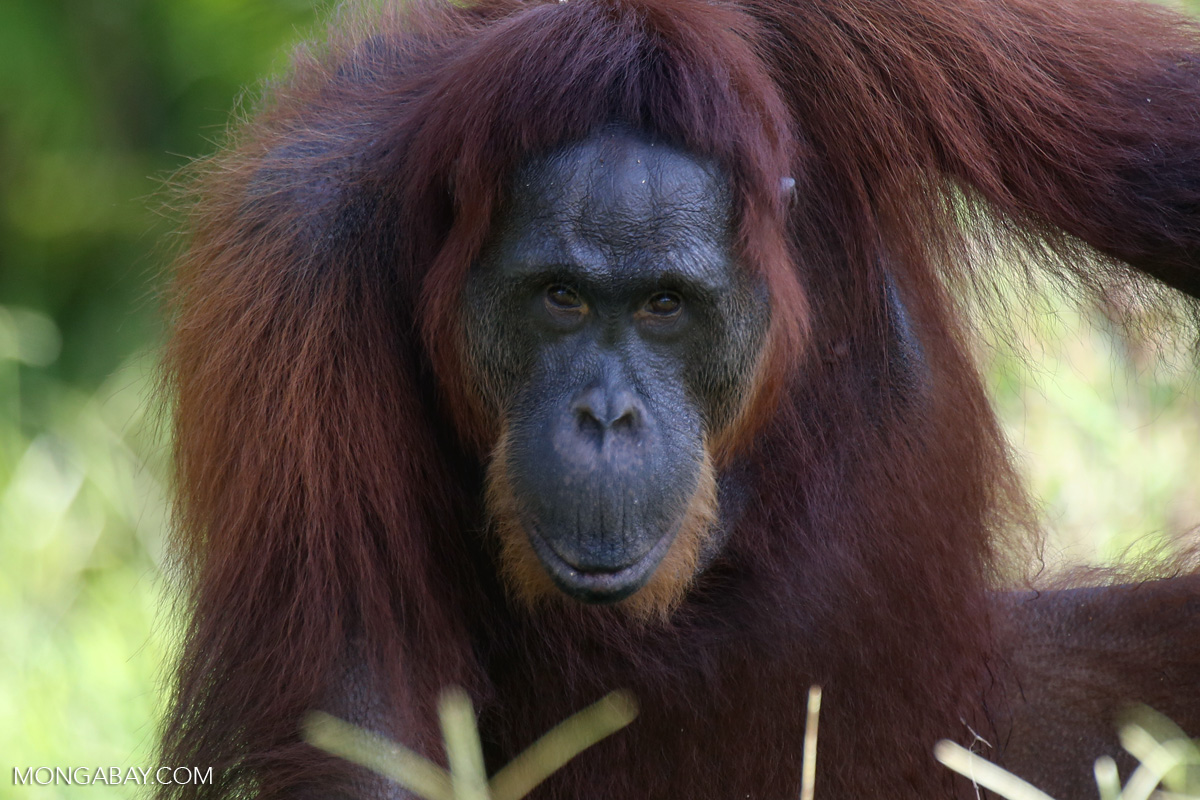- Police in Indonesia have arrested four farmers for allegedly shooting a Bornean orangutan whose body was found riddled with 130 air gun pellets.
- The suspects claimed to have killed the animal because it had encroached onto their pineapple farm and ruined the crop.
- The killing was the second such case reported this year in Indonesia, where orangutans are ostensibly protected under the conservation act. But lax enforcement means few perpetrators ever face justice for killing or trading in these great apes.
JAKARTA — Police in Indonesia have arrested and charged four farmers with the killing of an orangutan found shot more than 100 times.
Investigators in East Kalimantan province, in Indonesian Borneo, detained the four men on Feb. 15 and charged them the following day. They have been identified as 36-year-old Muis; H. Nasir, 55; and Andi and Rustam, both 37. (Many Indonesians go by one name.)
As part of the arrest, police also seized four pellet guns allegedly used in the killing.
The male Bornean orangutan (Pongo pygmaeus) was found barely alive on Feb. 5 by officials from Kutai National Park in East Kalimantan. An X-ray revealed its body was riddled with 130 air gun pellets. It died the next day from its extensive injuries.
Teddy Ristiawan, the chief of the East Kutai district police, said in a statement on Feb. 17 that the five suspects “all took turns shooting at the orangutan.” Police said a fifth person, a 13-year-old boy, was also involved in the killing, but would not be charged because he was a minor.

According to police, the farmers killed the orangutan because they believed it had encroached onto their pineapple farm and ruined their crop. An autopsy conducted earlier had revealed pineapple remnants in the animal’s stomach.
The police have charged the suspects with violating the 1990 conservation act. Under the specific article on killing protected animals, which include the critically endangered Bornean orangutan, the suspects could face prison time of up to five years and fines of up to 100 million rupiah ($7,000).
East Kalimantan province is home to an estimated 2,900 orangutans, more than 60 percent of which inhabit Kutai National Park, according data from the environment ministry.
The use of air guns, which can be purchased without having to obtain a license and which fire pellets similar to those recovered from the dead orangutan, is common among farmers and plantation workers in East Kalimantan, and other regions that overlap with orangutan habitats, to hunt down animals they see as pests.
A recent study suggested that orangutan killing in Borneo was a key factor in the loss of nearly 150,000 of the apes between 1999 and 2015, alongside deforestation and forest clearing for industrial plantations.
The orangutan killing in East Kalimantan was the second such case reported in Indonesia this year. In January, an orangutan was found decapitated and shot more than a dozen times with a pellet gun in a river in Central Kalimantan. Police have arrested and charged two rubber farmers in connection with the killing of the protected species.
The Bornean orangutan is listed by the IUCN as “Critically Endangered,” or close to vanishing in the wild. The main threats to the species’ survival are hunting, loss of habitat as forests across Borneo are razed to make way for monoculture plantations and mines, and poaching for the illegal pet trade.
Orangutans are ostensibly protected by law, but lax enforcement means few perpetrators ever face justice for killing or trading in these great apes.

Banner image: A Bornean orangutan. Photo by Rhett A. Butler.
FEEDBACK: Use this form to send a message to the author of this post. If you want to post a public comment, you can do that at the bottom of the page.
